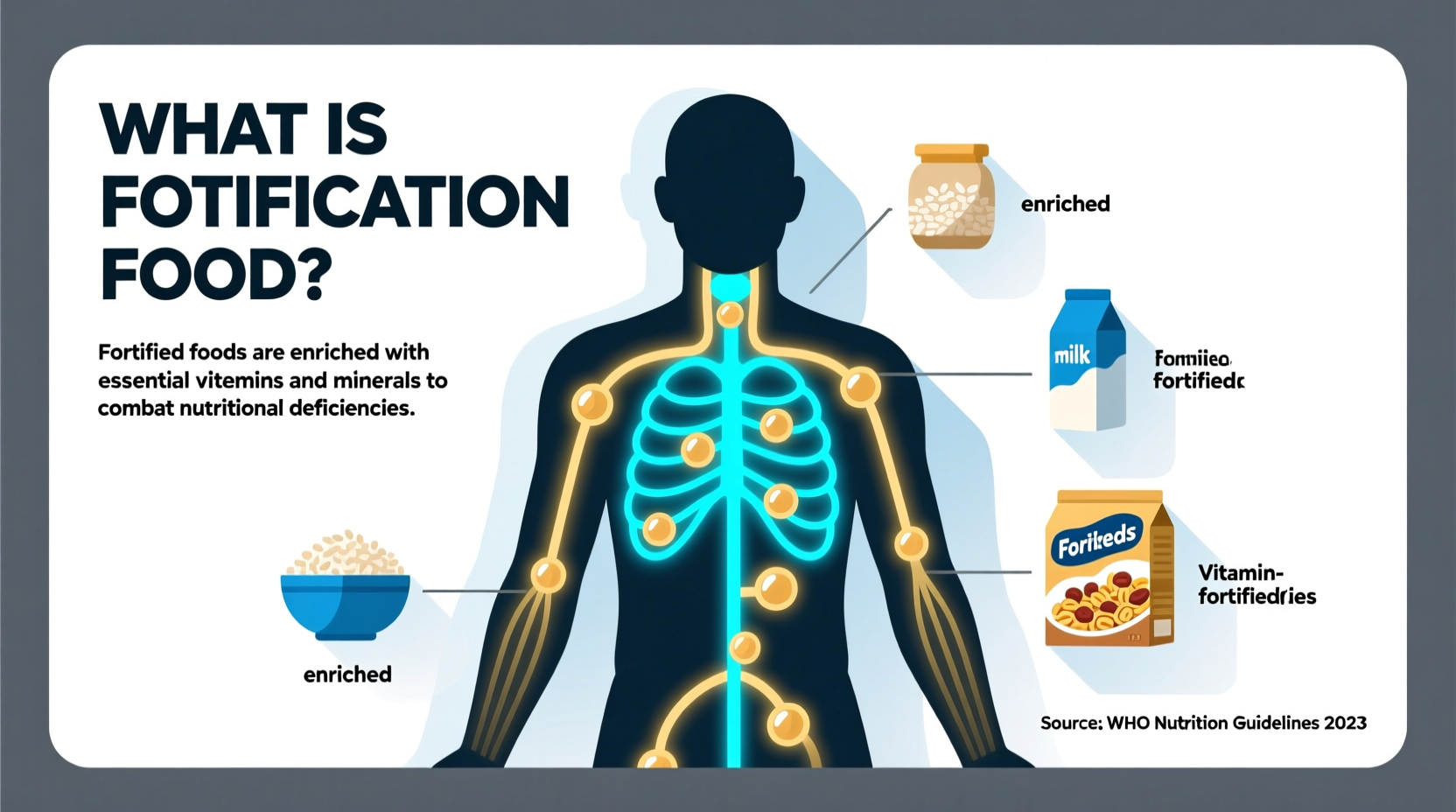Ever wonder why your breakfast cereal packs more than just crunch? Or why salt suddenly became a public health hero? Understanding food fortification isn't just for nutritionists—it directly impacts your daily dietary choices and long-term health outcomes. This comprehensive guide cuts through the confusion, giving you clear, science-based insights about fortified foods you encounter daily.
The Evolution of Food Fortification: A Historical Timeline
Food fortification isn't a modern fad—it's a public health strategy with nearly a century of scientific development. The practice emerged as researchers connected specific nutrient deficiencies to widespread health problems:
How Food Fortification Actually Works
Fortification isn't random nutrient sprinkling—it follows strict scientific protocols. Food manufacturers add precise amounts of specific nutrients to staple foods that people consume regularly. The World Health Organization (WHO) establishes guidelines ensuring nutrients are added at levels that:
- Address specific population deficiencies without causing overconsumption
- Maintain stability during storage and cooking
- Don't alter taste, texture, or appearance of the food
- Provide meaningful nutritional impact when consumed regularly
For example, when folic acid is added to flour, it's carefully measured to deliver 140μg per 100g of grain product—the amount proven to significantly reduce neural tube defects while staying within safe consumption limits.

Everyday Fortified Foods You Probably Consume
You interact with fortified foods daily without realizing it. These common products have been enhanced to address specific nutritional gaps:
| Fortified Food | Added Nutrients | Primary Health Benefit | Global Impact |
|---|---|---|---|
| Table salt | Iodine | Prevents goiter, supports thyroid function | 90% reduction in iodine deficiency disorders where implemented (WHO) |
| Breakfast cereals | B vitamins, iron, zinc | Supports energy metabolism, cognitive function | Significantly improves nutrient intake in children (CDC) |
| Flour and bread | Folic acid, iron, B vitamins | Prevents birth defects, reduces anemia | 35% reduction in neural tube defects in fortified countries (NIH) |
| Milk and plant-based alternatives | Vitamin D, calcium | Supports bone health, immune function | Reduced rickets cases by 80% in fortified populations |
Fortification vs. Enrichment: Clearing the Confusion
Many people confuse fortification with enrichment, but they're distinct practices with different purposes:
- Fortification: Adding nutrients that weren't originally present in significant amounts (like folic acid in flour)
- Enrichment: Replacing nutrients lost during processing (like B vitamins added back to refined grains)
This distinction matters because fortification specifically targets population-level nutrient gaps, while enrichment maintains a food's original nutritional profile. When you see "enriched flour" on a label, it means nutrients removed during milling have been restored. "Fortified" indicates additional nutrients beyond the food's natural composition.
Public Health Impact: Beyond Individual Nutrition
Food fortification represents one of public health's most cost-effective interventions. According to the Centers for Disease Control and Prevention, every $1 invested in salt iodization returns $30 in economic benefits through improved cognitive development and reduced healthcare costs. The World Health Organization credits mandatory folic acid fortification with preventing approximately 1,300 neural tube defect births annually in the United States alone.
However, fortification effectiveness varies by implementation. Countries with mandatory, well-monitored programs see dramatic improvements, while voluntary programs often fail to reach vulnerable populations. This context matters when evaluating fortification's real-world impact in different regions.
Smart Shopping: Identifying and Benefiting from Fortified Foods
You don't need a nutrition degree to leverage fortified foods. Follow these practical strategies:
- Read ingredient labels: Look for specific nutrient mentions ("fortified with", "enriched with") rather than just "vitamins added"
- Check serving sizes: Many products deliver significant nutrients only at recommended serving sizes
- Balance fortified foods: Don't rely solely on fortified products—combine with whole food sources for complete nutrition
- Understand your needs: Pregnant women need folic acid-fortified grains; older adults benefit from vitamin D-fortified dairy
Remember that fortification complements—but doesn't replace—a balanced diet. The FDA requires that fortified foods maintain their nutritional integrity through normal storage and cooking, but some nutrients (like vitamin C) degrade more easily than others.
The Future of Food Fortification
Emerging fortification strategies address increasingly specific nutritional needs:
- Double-fortified salt: Combines iodine with iron to tackle two major deficiencies simultaneously
- Region-specific formulations: Custom nutrient blends addressing local deficiency patterns
- Biofortification: Breeding crops to naturally contain higher nutrient levels (different from industrial fortification)
- Personalized fortification: Emerging technologies allowing customized nutrient additions based on individual needs
As research continues, fortification science becomes increasingly precise—targeting specific populations, life stages, and even genetic variations that affect nutrient metabolism. The goal remains unchanged: using food as medicine to prevent deficiency-related health issues at scale.
What's the difference between fortified and enriched foods?
Fortification adds nutrients not originally present in significant amounts (like folic acid in flour), while enrichment replaces nutrients lost during processing (like B vitamins added back to refined grains). Fortification targets specific population deficiencies, whereas enrichment maintains a food's natural nutritional profile.
Are fortified foods safe to consume regularly?
Yes, fortified foods are safe when consumed as part of a balanced diet. Regulatory agencies like the FDA establish maximum allowable nutrient levels to prevent overconsumption. Most fortified products deliver nutrients at levels designed to complement—not replace—nutrients from whole foods, making daily consumption safe for the general population.
Which nutrients are most commonly added through fortification?
The most common fortified nutrients include folic acid (in grains), iodine (in salt), vitamin D (in dairy and plant-based alternatives), vitamin A (in sugar and oil in some countries), and iron (in cereals and flours). These are selected based on population-wide deficiency patterns and scientific evidence of health impact.
How can I tell if a food product is fortified?
Check the ingredient list for phrases like "fortified with" or "enriched with" followed by specific nutrients. The Nutrition Facts panel will also show higher percentages of certain vitamins and minerals compared to non-fortified versions. Look for specific nutrient mentions rather than general terms like "vitamins added" which may indicate minimal fortification.











 浙公网安备
33010002000092号
浙公网安备
33010002000092号 浙B2-20120091-4
浙B2-20120091-4